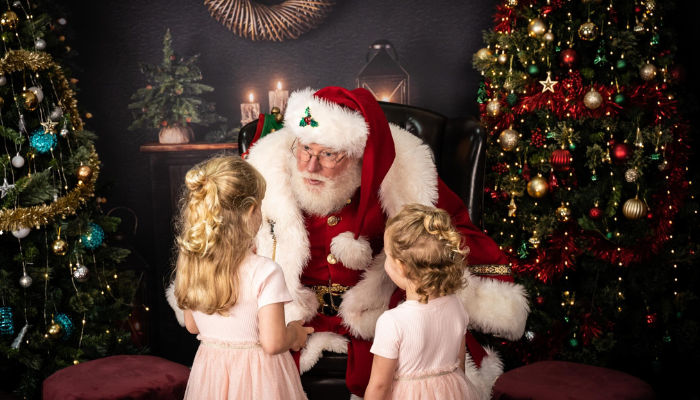
Last updated on February 22nd, 2024 at 12:36 pm
The algorithm reveals the unique appearance of the man in red, showing that not just any bearded man resembles him
Santa impersonators, beware. Scientists have developed a Santa-detection machine and used it to confirm what children have been asserting to adults for generations – that Santa has a unique face that clearly sets him apart from other elderly bearded men.
Previous studies have indicated that children as young as three can identify Santa Claus based on his distinctive appearance.
“Santa Claus or Father Christmas is obviously a very recognisable person, but we wondered whether this is because of his clothing, his beard or his face?” said Dr. Thomas Wright, a clinical geneticist at the University of Manchester, who led the research. “Until now no one has ever systematically and scientifically interrogated the modern face of Father Christmas.”
To investigate this, Wright and his team trained a deep-learning facial-recognition algorithm, similar to the facial ID software used for unlocking smartphones or identifying people in digital photo libraries, using numerous images of Santa collected from the internet. They then utilized the software to analyze additional images of Santa, as well as images of other adult and elderly men with beards.
“The important thing is that this [algorithm] is only looking at the facial features. It doesn’t care what the individual is wearing or what colors are in the photograph. We wanted to know, does Father Christmas have a facial phenotype that is distinguishable from other adult men or other elderly bearded men?” said Wright.
The study, published in the journal Vision, concluded that Santa’s face is indeed distinguishable from those of other men. However, whether internet depictions of Santa accurately portray the real magical resident of the North Pole remains a question only Rudolph and his companions can answer.
Their tool also failed to categorize images of Saint Nicholas, an early Christian bishop from the Middle East whose tradition of secret gift-giving is believed to have inspired modern concepts of Father Christmas. It also did not identify Walter Clement Shields, an Alaskan man from the early 20th century who was recently suggested as a prototype for Santa, despite his history of delivering gifts by reindeer sleigh.
Wright is interested in exploring whether other related holiday characters, such as Papa Noël, Tomte, Julenissen, Ded Moroz, Sinterklaas, and Los Reyes Magos, would pass the test, as well as dedicated Santa impersonators who participate in the annual World Santa Claus Congress.
Wright suggested that the tool could be further developed to offer a Santa “lookalike score” instead of just categorizing individuals as “Santa,” “adult man,” or “elderly bearded man.”
He also mentioned that it would be intriguing to investigate whether other folklore characters, such as the Tooth Fairy, Robin Hood, and Tom Thumb, also had distinct facial features.





